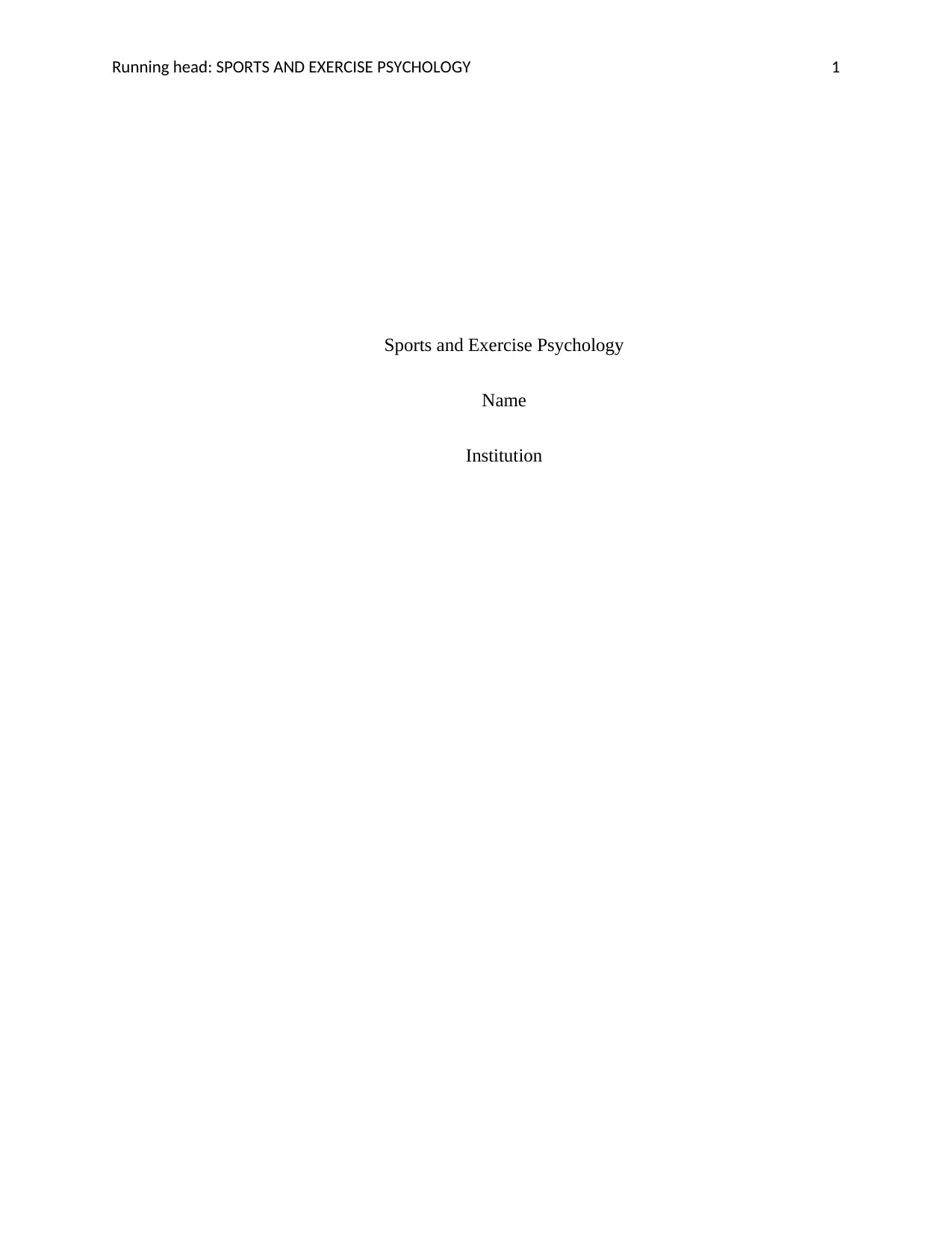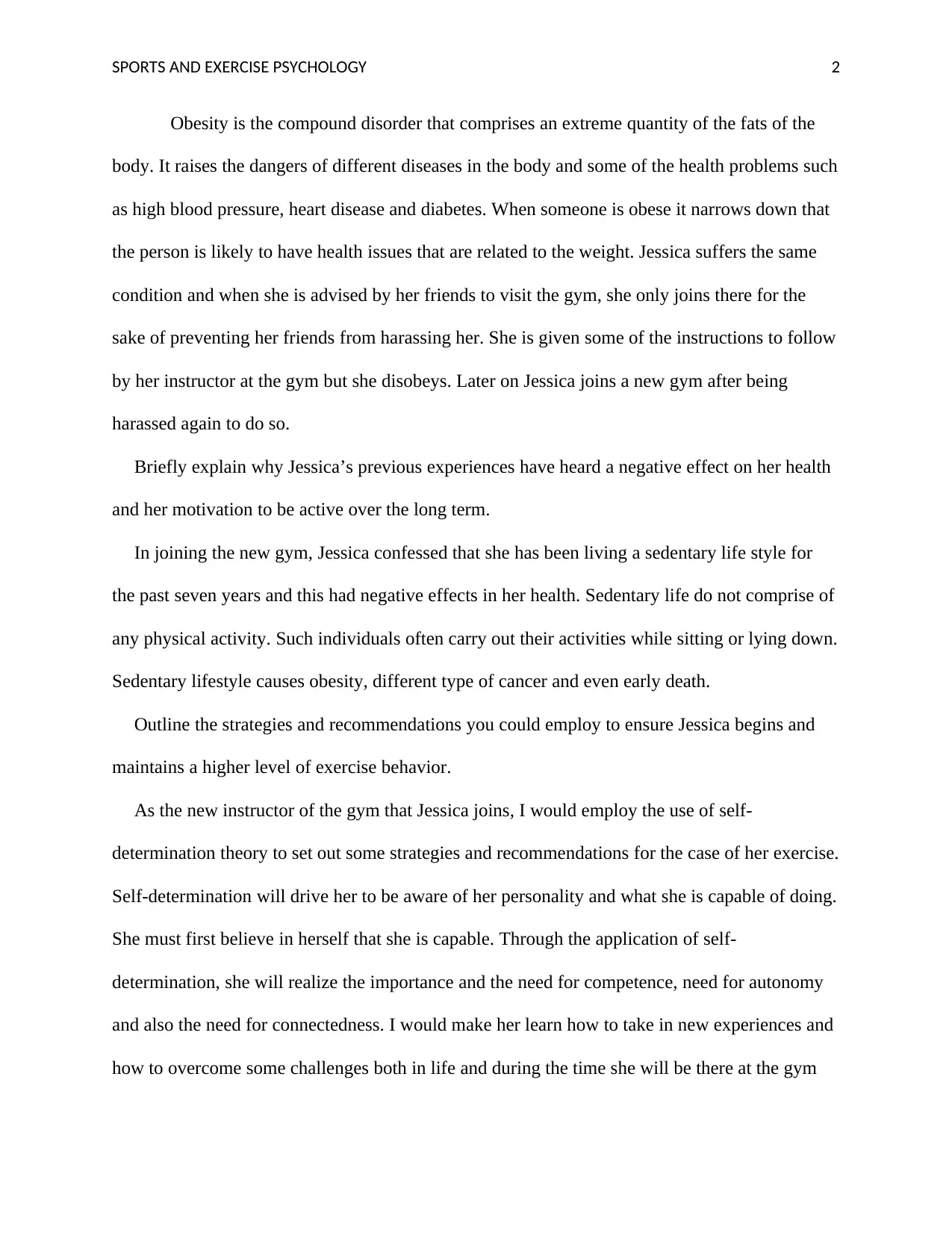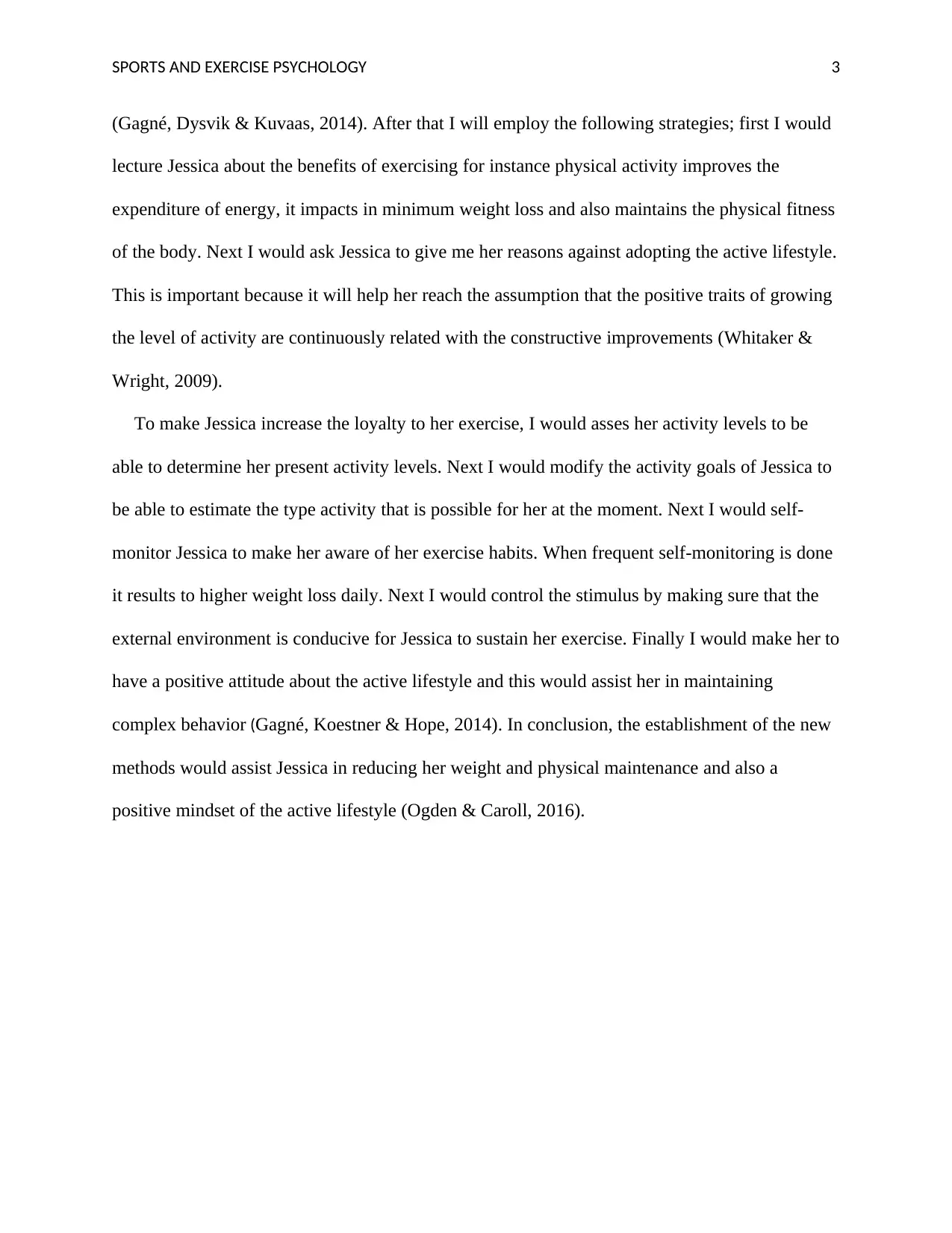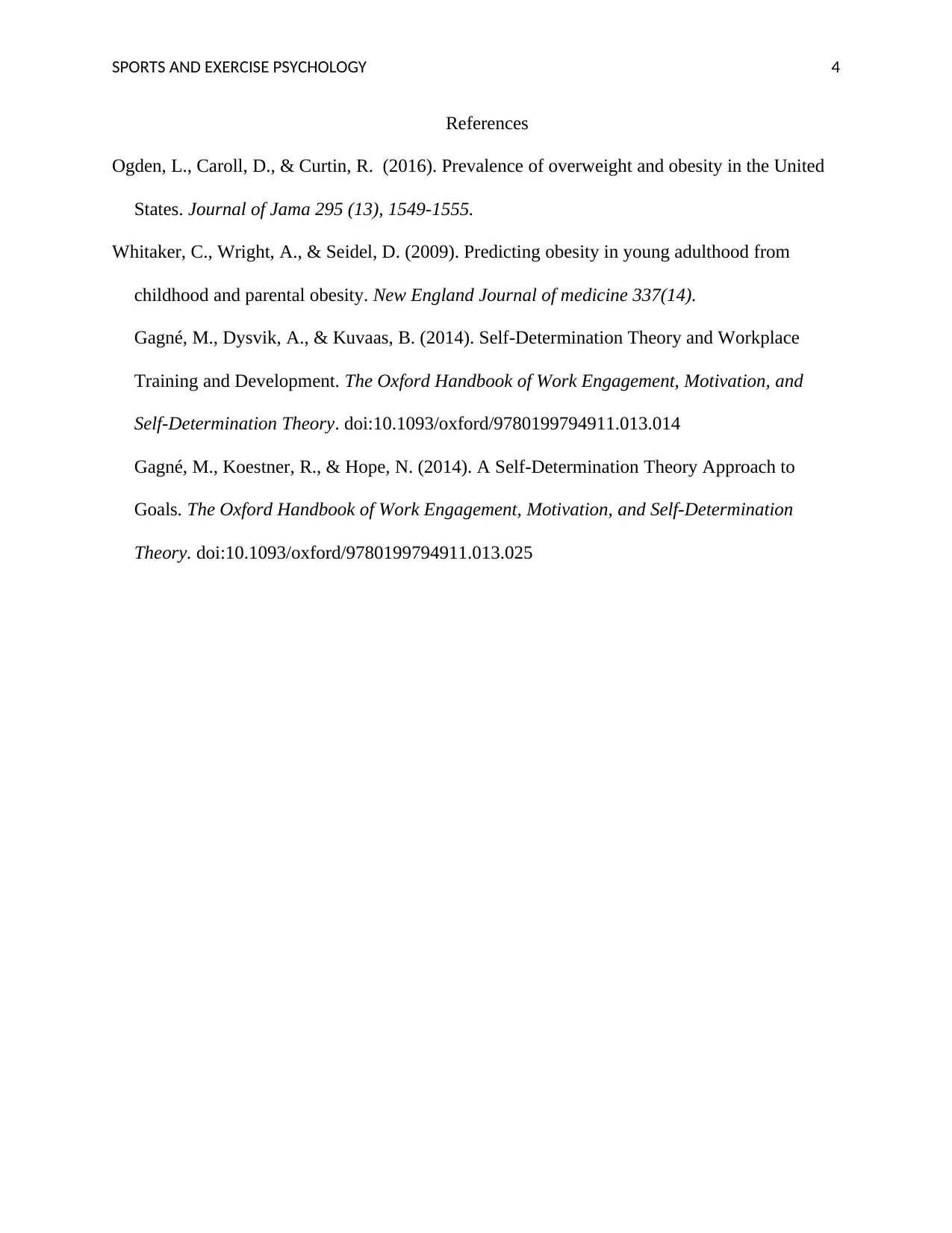Sports and Exercise Psychology: Strategies for Exercise Adherence
VerifiedAdded on 2023/02/01
|8
|846
|60
Report
AI Summary
This report delves into the field of sports and exercise psychology, using a case study of an individual named Jessica who struggles with obesity and a sedentary lifestyle. The report explores the negative effects of a sedentary lifestyle and the psychological factors influencing exercise adherence, including motivation and self-determination. The author analyzes Jessica's previous negative experiences and their impact on her long-term health and motivation. The report then outlines a series of strategies and recommendations, based on self-determination theory, to help Jessica initiate and maintain a higher level of exercise behavior. These strategies include educating Jessica about the benefits of exercise, assessing her current activity levels, modifying her activity goals, self-monitoring her progress, controlling the stimulus, and fostering a positive attitude towards an active lifestyle. The report concludes by emphasizing the importance of these methods in promoting weight loss, physical maintenance, and a positive mindset. The report also provides references to relevant literature in the field of sports and exercise psychology to support the presented arguments and recommendations.
1 out of 8















![[object Object]](/_next/static/media/star-bottom.7253800d.svg)